
I have a lot of experience in building forms using different tools, and I have faced many challenges, such as dealing with buggy interfaces and fighting for data accuracy.
While 123FormBuilder is a good tool, it’s no one-size-fits-all solution. This led me to other tools on the market
Based on that, I’ve put together this list of 123FormBuilder alternatives and competitors to help you build better forms in 2024 and beyond.
Some of these alternatives I have used myself, while others are based on thorough research and peer recommendations.
Here’s a quick comparison table to give you a bird’s eye view of the tools:
| Product | Best For | Pricing |
|---|---|---|
| ProProfs Survey Maker | Real-Time Reports | Free plan available, Paid starts at $19.99/month |
| Cognito Forms | Creating Forms That Require Payment | Starts at $15/month |
| Google Forms | Collecting Targeted Insights | Free |
| Microsoft Forms | AI-Generated Questions | Starts at $6/month |
| Formstack | Custom Actions After Form Submission | Starts at $50/month |
| Jotform | Collecting on-Site Feedback | Free starter plan, Paid starts at $19.50/month |
| Gravity Forms | Launching Surveys on WordPress Sites | Starts at $59/year |
| Ninja Forms | Multi-Page Feedback Forms | Starts at $99/year |
| Zoho Forms | Sharing Surveys Instantly | Free plan available, Paid starts at $25/month |
List of Alternatives to 123FormBuilder
I’ve compiled a list of the top 9 123FormBuilder alternatives and competitors for 2024 based on my own experience, research, and recommendations from peers. Check my selection criteria after the list.
1. ProProfs Survey Maker: Best for Real-Time Reports
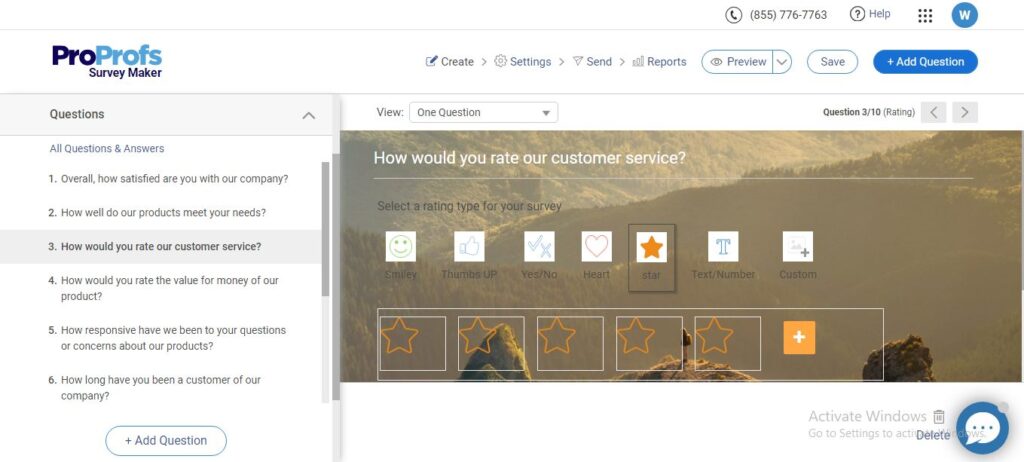
ProProfs Survey Maker is my top pick among all the 123FormBuilder alternatives on my list. It has made my life easier by helping me create engaging sidebar forms that give me actionable insights to make informed decisions quickly.
The tool’s analytics is one of the coolest features that allows me to view the results of my forms and surveys in real-time, as soon as users submit their responses. This enables me to quickly act on the insights I receive to make informed decisions that drive growth.
The reports feature is also super helpful in providing me with visually appealing, presentation-ready reports that make studying and interpreting data effortless. This way, I can tailor my products and services to the unique needs of my audience.
What you’ll like:
- 1,00,000+ expertly crafted questions for more insightful responses.
- Custom design options to match your forms and surveys with your brand.
- Easily shareable surveys to reach a wider audience.
- Conditional logic to create personalized surveys that adapt to the user’s responses.
- Smart triggers to display your surveys at the right moment.
- Support for 90+ languages to help you reach a global audience.
What you won’t like:
- It would be helpful if there were more industry-specific templates.
- Mobile responsiveness of some surveys needs improvement.
Pricing:
A FOREVER-free plan is available. Paid starts at $19.99/month.
Watch: How to Create a Survey Using ProProfs Survey Maker
2. Cognito Forms: Best for Creating Forms That Require Payment
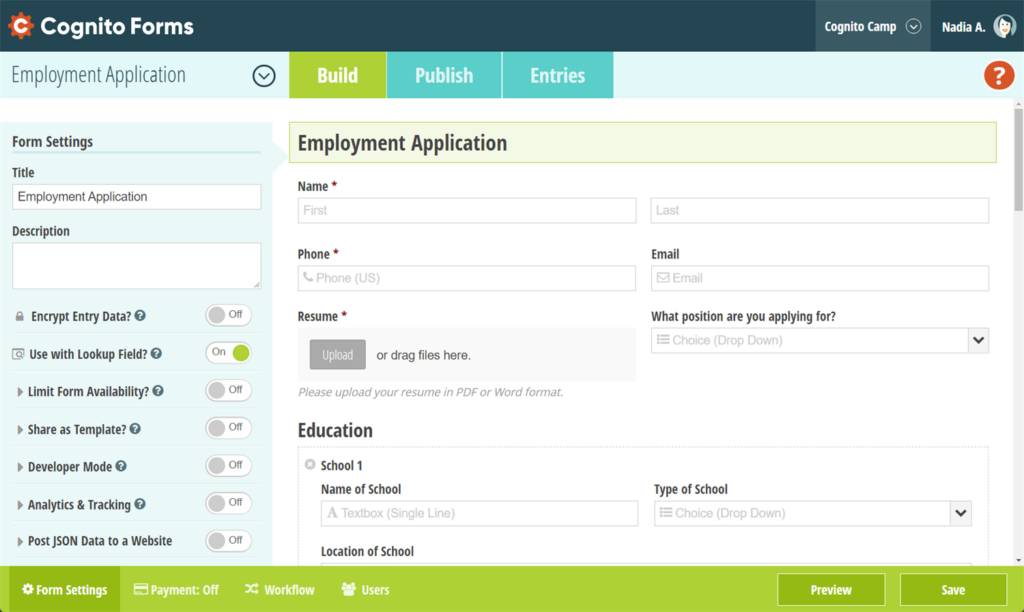
Image Source: Cognito Forms
I needed to make some cool and secure subscription forms for my client’s website, and Cognito Forms proved to be the perfect solution.
I used this easy form builder to quickly build my forms using their pre-built templates. Then, I linked a Stripe account to Cognito Forms in the payment settings and chose to save payment info for future payments. This way, customers could enjoy a hassle-free experience.
Cognito Forms also allowed me to map billing fields to the corresponding fields in Stripe and include processing fees in the subscription forms. This ensured that I could cover the costs of the payment provider and avoid any unexpected expenses.
What you’ll like:
- Customizable field types to record your data exactly how you need it, such as dates, times, etc.
- Workflow Automation to enable automated actions to engage the right people at the right time.
- Easy data management to organize, configure, and transform your data to generate custom documents.
- Data protection with HIPAA, GDPR, CCPA, and other security regulations.
- Integration with Zapier, Integromet, and other tools to enhance the functionality of your forms.
What you won’t like:
- It takes a lot of effort to set up workflows.
- With no search feature available, it’s difficult to locate certain information.
Pricing:
Starts at $15/month.
3. Google Forms: Best for Collecting Targeted Insights
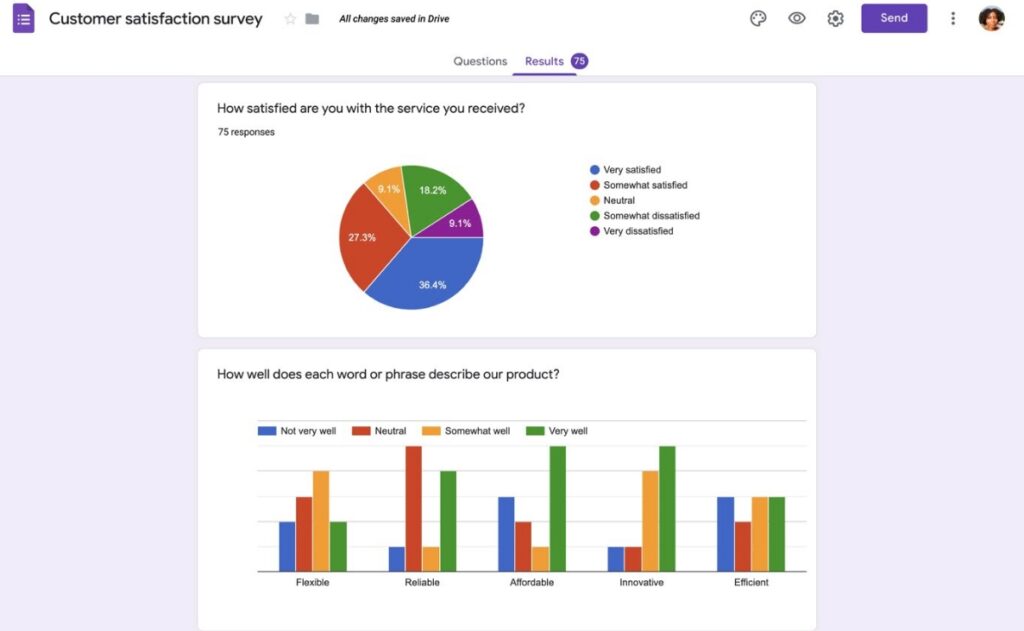
Image Source: Teacher Yan
Google Forms is one of the best alternatives to 123FormBuilder I have used. It was my go-to online form creation tool for the longest time.
I used Google Forms to design a set of questions that captured the subtle feedback I needed.
But, creating the form was only the first step. I also leveraged Google Forms’ easy sharing options to distribute my surveys via email and social media, and reach my ideal audience across the globe.
As the responses poured in, I monitored them using Google Forms’ dynamic charts and graphs, and discovered patterns and trends in the data.
The insights I discovered helped me validate and refine my product idea, and identify the most promising market segments.
What you’ll like:
- Instant reporting to get a quick overview of the results.
- File upload option to collect richer and more diverse data.
- Smart suggestions for possible answers to save respondent’s time and effort.
- Customizable themes to make your survey attractive.
- One-time response to prevent duplicate responses by allowing only one submission per user.
- Question shuffling to create different sequences for each respondent.
What you won’t like:
- No advanced data analysis capabilities.
- It provides very basic features.
Pricing:
Free
4. Microsoft Forms: Best for AI-Generated Questions
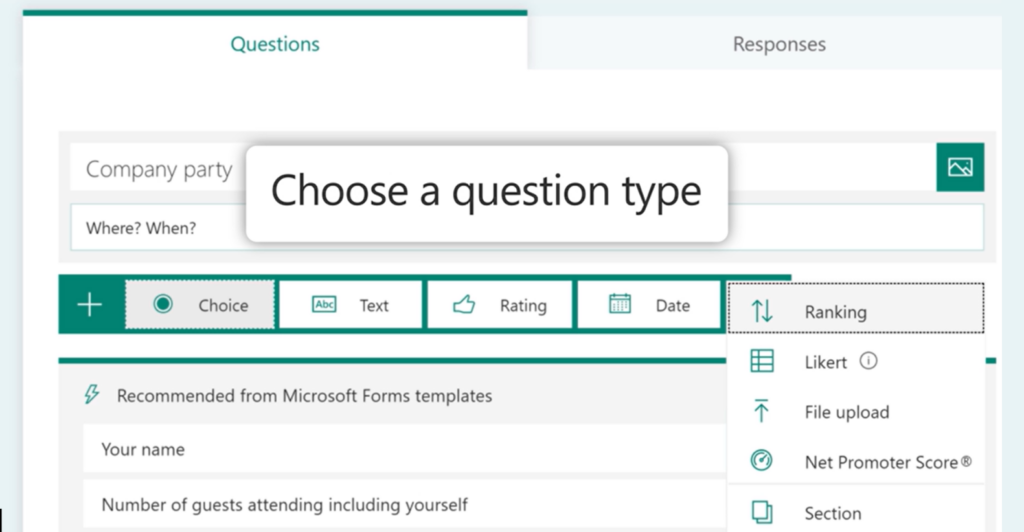
Image Source: Microsoft
I often used Microsoft Forms and found its built-in AI feature to be extremely helpful. It made customization of my online forms effortless with its smart recommendations that suggested potential questions and question types based on my selected templates.
I didn’t have to start from scratch anymore, which was a huge time saver.
Plus, the AI also helped me analyze the responses by providing data insights that included score distribution, association rule analysis, and word clouds. This gave me a better understanding of user feedback and enabled me to make informed decisions.
What you’ll like:
- Conditional logic to direct respondents to specific questions based on their previous answers.
- Real-time data visualization makes it easy to analyze trends and insights.
- Advanced customization to ensure that your forms align with your brand standards.
- Easy shareability allows data collection from external users without risking security.
- User anonymity provides the option to collect responses anonymously.
What you won’t like:
- Limited integration options with non-Microsoft products.
- There are not many choices for the answer types.
Pricing:
Starts at $6/month.
5. Formstack: Best for Custom Actions After Form Submission

Image Source: Formstack
The next 123FormBuilder alternative on the list is Formstack. One of the features I liked was Data Routing, which helped me route form submissions to different team members based on how the user responded.
For example, I made a feedback form for a new product launch and wanted to send the submissions to the product manager, marketing manager, and customer support manager based on how the user rated. I used Data Routing to set up the following rules:
- If the user rated the product 4 or 5 stars, send the submission to the product manager and the marketing manager.
- If the user rated the product 3 stars or less, send the submission to the customer support manager.
- If the user rated 1 or 2 stars, send the submission to the product manager and the customer support manager.
This way, I was able to automate the process of collecting and distributing feedback among my team members.
What you’ll like:
- Drag-and-drop builder to create forms and surveys easily.
- Form importer to easily import forms from other platforms into Formstack.
- Save and Resume helps users save their progress and come back later to complete the form.
- SSO-powered Field Prefill to optimize your data collection and improve user experience.
- Advanced integrations to automate your data flow.
What you won’t like:
- Some important features are missing from the dashboard when compared to other tools.
- Limited design options make it challenging to match it with your brand.
Pricing:
Starts at $50/month.
6. Jotform: Best for Collecting on-Site Feedback
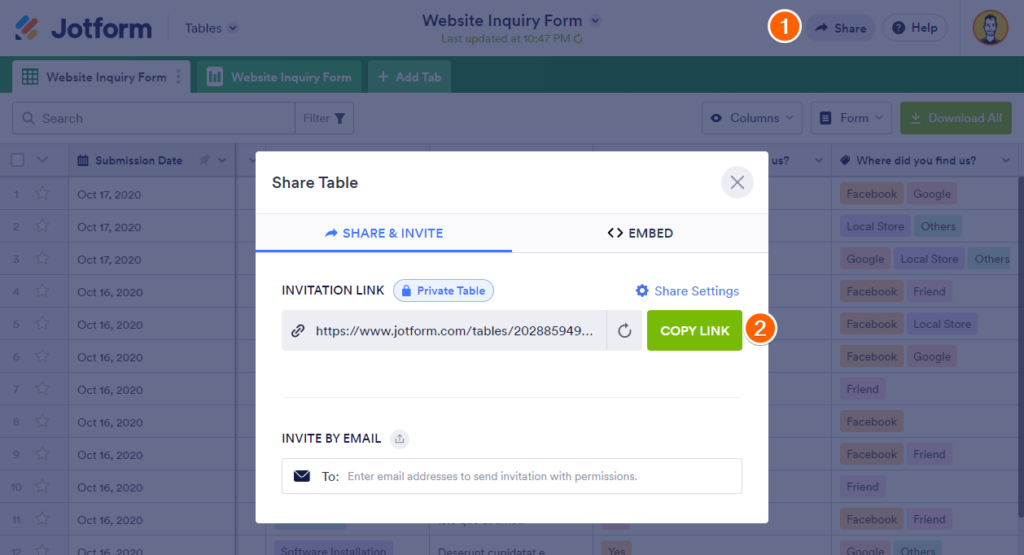
Image Source: Jotform
The next amazing 123FormBuilder alternative on the list is Jotform. It lets you create engaging forms without any coding knowledge.
But Jotform stands out from other form building tools because of its Kiosk surveys feature. A friend who owns a retail store shared with me how he used Jotform Mobile Forms to collect feedback from his customers on-site.
He set up a device with the Jotform Mobile Forms app at his store and activated the touchless kiosk feature. This enabled customers to scan a QR code and complete a survey on their own devices without touching the screen or downloading any additional apps. He mentioned that this feature was a great way to get honest and instant feedback from his customers.
What you’ll like:
- Answer piping to make your surveys more relevant by using previous answers in later questions.
- Conditional logic to customize your surveys by displaying or hiding fields depending on user responses.
- Google Analytics survey tracking to gain deeper insights into your survey performance.
- CRM integrations with popular platforms like Zapier, Salesforce, Square, and more.
- Survey translation to expand your reach by offering surveys in multiple languages.
- Ready-made survey templates to speed up your workflow.
What you won’t like:
- Limited survey design options.
- Dated UI makes it difficult to navigate the tool.
Pricing:
Starts at $19.50/month. A free starter plan is available.
7. Gravity Forms: Best for Launching Surveys on WordPress Sites
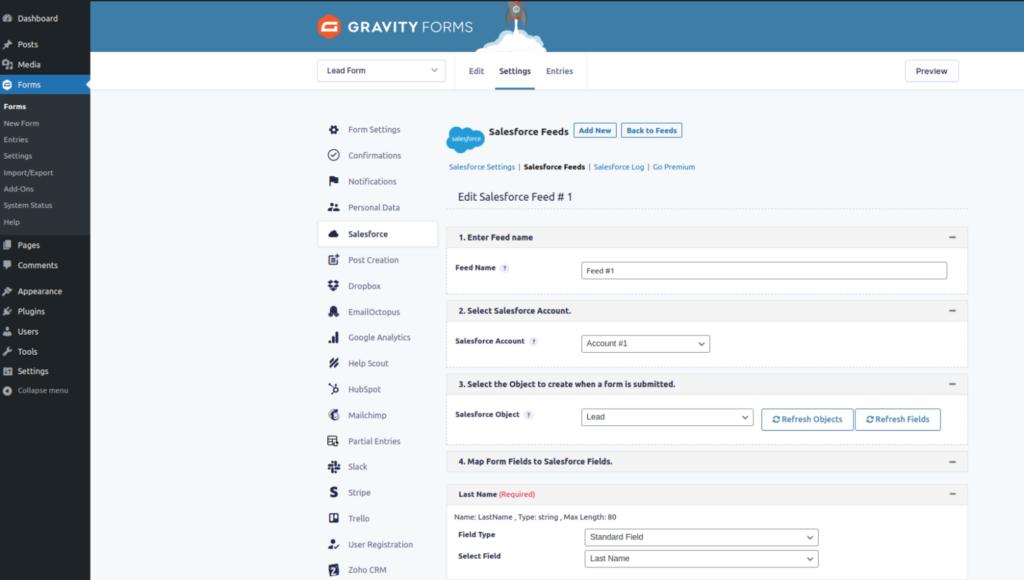
Image Source: Arrify
My peer suggested Gravity Forms to me when I had to create custom surveys and polls for my client’s WordPress website. It’s a plugin that works seamlessly with WordPress, allowing me to create forms that match my client’s brand and website design.
I could easily customize the questions and the appearance of the forms and integrate them with other WordPress plugins and services, such as Google Analytics and Mailchimp.
Gravity Forms helped me collect and use feedback data from my client’s customers, and improve their satisfaction and loyalty.
What you’ll like:
- Paginated forms to divide longer forms into multiple pages to make them more user-friendly.
- Conditional logic to display or hide fields, sections, pages, and more based on user selections.
- 30+ form fields to meet your form-building needs.
- Data routing to easily route form submissions to different tools, emails, etc.
- GFChart will create charts and calculations from form entries, enabling data visualization.
What you won’t like:
- It may take time to familiarize with all the features it offers.
- It has problems connecting to CRM tools.
Pricing:
Starts at $59/year.
8. Ninja Forms: Best for Multi-Page Feedback Forms
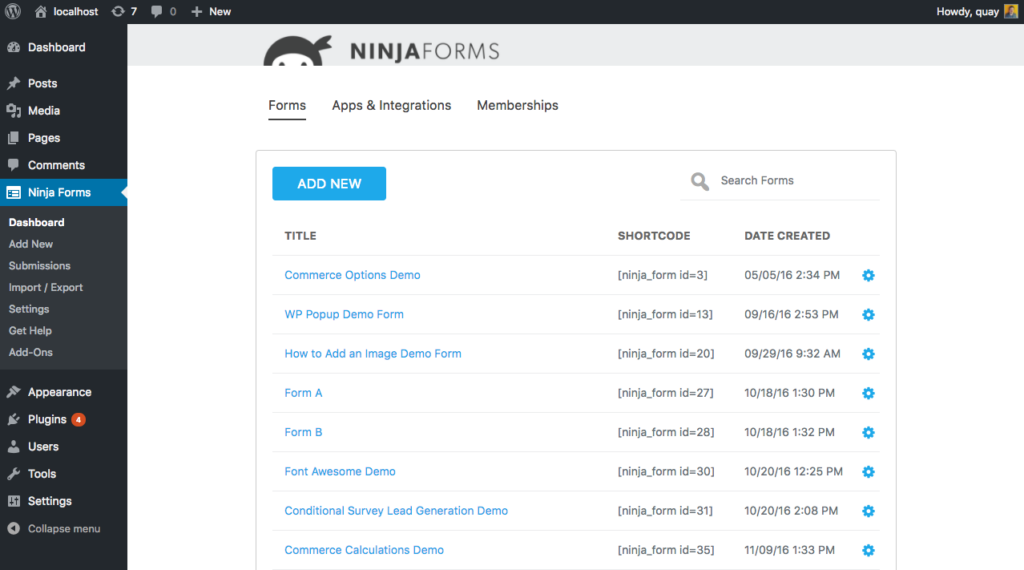
Image Source: Ninja Forms
I recently tried Ninja Forms’ free plan to create multi-page forms for my new project’s WordPress site. I must say, I was quite impressed by how straightforward and speedy it was to generate forms with their intuitive drag-and-drop interface.
The best part was that I could break down lengthy forms into smaller, manageable sections and add navigation buttons, progress bars, and breadcrumbs to each page.
This made the forms more engaging and interactive for users, as they could track their progress and easily move between the pages.
It was a fun and simple way to create feedback forms.
What you’ll like:
- Anti-spam features to protect your forms from spam and bots.
- Automated design adopting to match the look and feel of your WordPress site.
- Editable templates to get you started instantly.
- Drag-and-drop form builder to design your surveys without any coding knowledge.
- Conditional logic to ask relevant questions based on previous responses.
What you won’t like:
- The visual reporting feature is not very advanced.
- It requires paid add-ons for additional features.
Pricing:
Starts at $99/year.
9. Zoho Forms: Best for Sharing Surveys Instantly
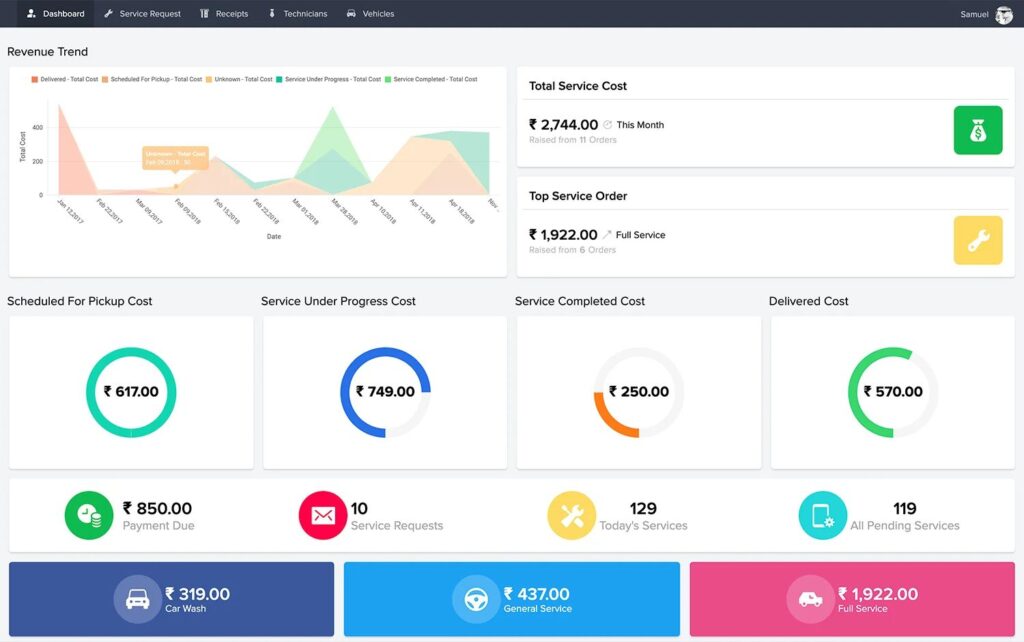
Image Source: Zoho
My next best form builder for you is Zoho. Based on my personal research, I find this tool to be incredibly versatile in creating and managing feedback forms and surveys.
With Zoho, you can design engaging surveys that match your brand identity, audience preferences, and campaign goals. Plus, you can easily share your surveys and results across social media and email campaigns to maximize your reach.
Its SSL protection also helps encrypt your survey data and ensures the confidentiality and protection of your respondents’ information.
What you’ll like:
- Easy to integrate with tools like Tableau, MailChimp, etc., to optimize your feedback loop.
- Ready-made survey templates that suit your needs and customize them to match your brand.
- Multilingual surveys to expand your reach and engagement.
- Offline surveys to ensure no feedback is missed due to lack of internet connectivity.
- Advanced question types to capture accurate and relevant data.
What you won’t like:
- Limited design options to create surveys.
- It has a bit of a learning curve.
Pricing:
Starts at $25/month. A free plan is available, but it doesn’t include all the paid features like Qualaroo.
Which Is the Best 123FormBuilder Alternative?
You may find it challenging to pick one tool from the following list. But don’t worry, I’ve further narrowed down the list to just three options:
Option A: ProProfs Survey Maker
It’s seriously awesome – I love how easy it is with ProProfs Survey Maker to create forms that give you valuable insights for making informed decisions. Plus, the real-time analytics and beautiful reports make analyzing data a breeze.
Option B: Formstack
Formstack is another 123FormBuilder alternative that I think you’ll love. Its Data Routing feature automatically sends form submissions to different team members based on user responses. It’s a great way to streamline feedback collection and distribution among your team.
Option C: Zoho
Zoho can be another great choice for your form-building needs. It’s an awesome tool that lets you create and manage feedback forms and surveys super easily. Also, your data is totally safe, thanks to their SSL protection and confidentiality for your respondents.
All three of these form building tools have a lot to offer. Remember to find the one that works best for you. Think about what you want to accomplish, and then take your pick.
Choose the Best 123FormBuilder Alternative
You’ve just learned about nine different tools that can help you create online forms. Each comes with unique strengths, limitations, features, and pricing.
The best way to find out which tool is right for you is to try them out yourself. See how they work, how they look, and how they feel. And then decide which one meets your expectations and goals.
My Selection Criteria
The evaluation of products or tools chosen for this article follows an unbiased, systematic approach that ensures a fair, insightful, and well-rounded review. This method employs six key factors:
User Reviews / Ratings
Direct experiences from users, including ratings and feedback from reputable sites such as G2 and Capterra, provide a ground-level perspective. This feedback is critical in understanding overall satisfaction and potential problems.
Essential Features & Functionality
The value of a product is ascertained by its core features and overall functionality. Through an in-depth exploration of these aspects, the practical usefulness and effectiveness of the tools are carefully evaluated.
Ease of Use
The user-friendliness of a product or service is assessed, focusing on the design, interface, and navigation. This ensures a positive experience for users of all levels of expertise.
Customer Support
The quality of customer support is examined, taking into account its efficiency and how well it supports users in different phases – setting up, addressing concerns, and resolving operational issues.
Value for Money
Value for money is evaluated by comparing the quality, performance, and features. The goal is to help the reader understand whether they would be getting their money’s worth.
Personal Experience/Expert’s Opinion or Favorites
This part of the evaluation criteria draws insightful observations from the personal experience of the writer and the opinions of industry experts.
FREE. All Features. FOREVER!
Try our Forever FREE account with all premium features!





